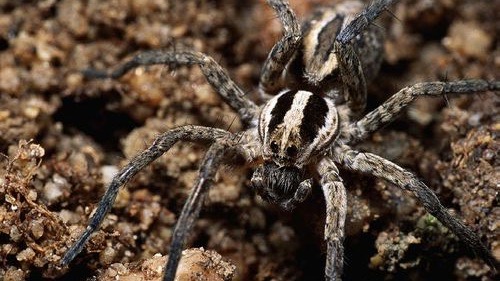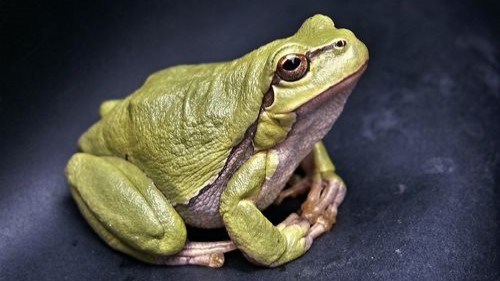Many people think that Tony Hawk is the best skateboarder ever.
Tony was born in 1968 and he grew up in San Diego, California. His father was a pilot in the Navy and his mother was a teacher. Tony was a wild child. In talking about his early years, Tony has said, “I was the terrible youth.”
Tony was very smart, but he was also restless. He had lots of energy and no idea what to do with it. However, that all changed on his ninth birthday when his brother gave him his first skateboard.
Tony took to skateboarding right from the start. There were very few skate parks at that time, so his dad built him a ramp in the backyard. He could then practice at home. He would be on the board for hours and hours. If he was not at school, he was skating. He soon became too good for the backyard ramp and began to practice at skate parks around San Diego.
Best of all for his parents, Tony had found a place to direct all of his energy. He left behind the troublemaking and focused all his time and effort into skating.
Tony’s talent was obvious. He began to master difficult moves very quickly. His dad was very supportive of Tony and drove him to skating contests all over California. In time, he realized there were not enough high-level contests and sponsors. Because of this, Tony’s father started two skating groups. One group was the National Skateboarding Association, which was the first professional organization of its kind. It ran many skating contests.
At the young age of 12, Tony gained his first sponsor, a skateboard company. The sponsor gave Tony free boards to use. At age 14, he became a professional skateboarder and started making money from skating. People began calling him the “Birdman” because when he rode his skateboard, tall, thin Tony looked as if he were a bird flying high in the air.
There are two main kinds of skateboarding: street and vert. Street skaters skate on anything that they can find, including sidewalks, curbs, railings, and stairs. These skaters use the world as their skate park. Vert skaters use specially made ramps so they can get high in the air to do tricks. Vert is a way of saying “vertical,” which means “straight up.”
Street and vert skating are both exciting, but vert skating allows for bigger tricks. Some vert tricks involve spinning around in circles on a board and then landing. For example, a “360” is a trick in which the skater spins around one full turn in the air. Other vert tricks involve flipping the board over while the skater is in the air. Tony was a very good street skater, but he was even better at vert skating.
Tony learned the tricks in vert skating quickly. He was very good at a trick called the “Ollie.” The Ollie is one of the most basic but famous skateboarding tricks. During this trick, the skater and the board both fly into the air, but the skater’s feet never leave the board. A skater needs to be able to master an Ollie first before moving on to the harder tricks. Tony managed that quickly.
By the time he was 16, Tony was the best skater in the world. By the time he was 19, he had won 20 professional skating events and he was earning more than $100,000 a year. He earned money by winning skating contests, and from sponsors who paid him to use their products. He had turned skating into a professional career. Tony owned his own house before he was 20 years old.
By the end of the 1980s, skateboarding was very popular. Tony and other skaters made videos that sold many thousands of copies. Skating contests attracted huge crowds and several skate parks opened in cities and towns. Tony was the sport’s king. He won contests all the time, he earned big money, and fans from around the world knew who he was.
Then it all came crashing down.
In the 1990s, skateboarding became less and less popular. One reason why skateboarding became less popular is that it is a very risky sport. The skaters can get hurt. Most of the time they get cuts and scrapes that are not too serious, but sometimes they break bones.
Because skating is such a risky sport, the skate parks needed to have insurance. The parks had to pay money to insurance companies in case a skater was injured. If the number of skaters increased, then the insurance costs increased. High insurance costs forced many skate parks to close, so skaters did not have a place to enjoy their sport.
Skateboarding contests also needed insurance. Many of the contests were canceled when the insurance costs rose too high. Tony was worried. There were fewer contests to enter and win. There were no more sponsors paying him to use their products. He was earning less money.
By then, Tony was married and had a child. His wife was working, but she was not making as much money as he had been earning when skateboarding was very popular.
Tony thought about getting a regular job. He liked computers. He thought he would get a job where he could work with computers, but he decided he could not give up skateboarding. He loved the sport too much to leave it.
In 1990, instead of giving up his career in skateboarding, Tony dove in. He started a skate company called Birdhouse Projects that made skateboards and other skating equipment.
At first, Birdhouse Projects did not do well. Tony had to sell his house to get the money to keep his business open. Sales were not great, but Tony kept hoping. Skateboarding had been good to him up to now, and he hoped it would be good to him again.
By 1995, Birdhouse Projects was doing better because a new kind of sports contest had started, called the “Extreme Games.” These Extreme Games, or “X Games,” include competitions in daring sports such as skateboarding, BMX biking, and motocross. The people who started the X Games asked Tony to compete in them. He won second place in street skating and first place in vert skating. The X Games were on TV, and millions of people saw Tony skating and winning. They saw that skateboarding was exciting. Once again, the sport became popular. Once again, Tony was its king.
Tony did well. He gained many new sponsors and won almost every contest he entered. He also hosted TV shows about skateboarding.
Tony traveled around the world to show people his amazing skating tricks. In every country he visited, skaters knew about Tony and came to see him skate. He was unbeatable in the X Games.
When it was time for the 1999 X Games, Tony was ready. He could do almost every skateboarding trick better than the other skaters. Yet one trick was so difficult that even Tony could not do it. The trick was called the “900.” A 900 is two and a half spins around on the skateboard, all while in the air. No other skater had ever landed the trick. Tony wanted to be the first.
In the 1999 X Games, Tony attempted to do the trick during his turn in the contest. The first time he tried, he was able to spin around two and a half times, but his board did not land in the right way. The same thing happened on his second try. He wanted to try a third time, but his time was up. The other skaters in the X Games agreed to let Tony attempt the trick one more time. He spun two and a half times in the air, waved his arms to keep his balance, and then landed.
He had done it! He was the first person to land a 900!
The crowd cheered. Everyone knew he was the best skater, and the 900 proved it. To this day, very few skaters have safely landed a 900. Tony was more popular than ever.
In 2002, Tony founded the Boom Boom Huck Jam, an event that combines rock music and extreme sports. Skaters, BMX bikers, and motocross dirt bike riders put on a dazzling and dangerous show, and popular bands play music. That same year, he started the Tony Hawk Foundation, which raises money to build skate parks. Tony’s foundation has built more than 125 skate parks in places that were not able to afford to build them.
Today, Tony is still very active in skateboarding, though he no longer enters skating contests. He does TV reports about the skaters at the X Games. He meets with skating fans from around the world to talk about the sport, and his Birdhouse Projects company is one of the most popular skateboard makers.
Tony Hawk was one of the first skaters to introduce the sport to people who had not heard of it. He has invented nearly 100 skating tricks, and has performed tricks better than any other skater. He was the first (and one of only four people in the world) to do the 900, which is the hardest skating trick.
Tony Hawk’s companies are very successful, and many of the top skaters use his products. He teaches children how to skate and educates millions of TV viewers from around the world about his sport. From Ollies to 900s to TV to X Games to skate parks, Tony Hawk flies high.









